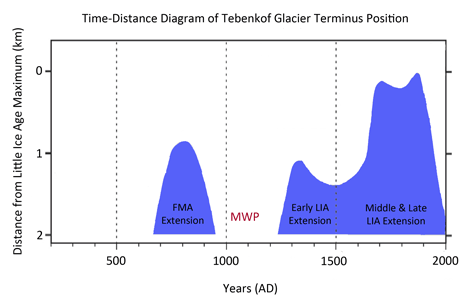Reference
Barclay, D.J., Wiles, G.C. and Calkin, P.E. 2009. Tree-ring crossdates for a first millennium AD advance of Tebenkof Glacier, southern Alaska. Quaternary Research 71: 22-26.
Description
Noting that "tree-ring crossdates of glacially killed logs have provided a precisely dated and detailed picture of Little Ice Age (LIA) glacier fluctuations in southern Alaska," the authors extended this history back into the First Millennium AD (FMA) by integrating similar data obtained from additional log collections made in 1999 with the prior data to produce a "new-and-improved" history of advances and retreats of the Tebenkof Glacier (located in the northern Kenai Mountains on the western edge of Prince William Sound) that spans the entire past two millennia. This work revealed that between the FMA and LIA extensions of the Tebenkof Glacier terminus, there was a period between about AD 950 and 1230 when the terminus dropped further than two kilometers back from the maximum LIA extension that occurred near the end of the 19th century. It also suggests that this warmer/drier period of glacier terminus retreat had to have been much more extreme than what was experienced at any time during the 20th century, because at the century's end the glacier's terminus had still not retreated more than two kilometers back from the line of its maximum LIA extension.

The temporal history of the distance by which the terminus of the Tebenkof Glacier fell short of its maximum LIA extension over the past two millennia. Adapted from Barclay et al. (2009).




